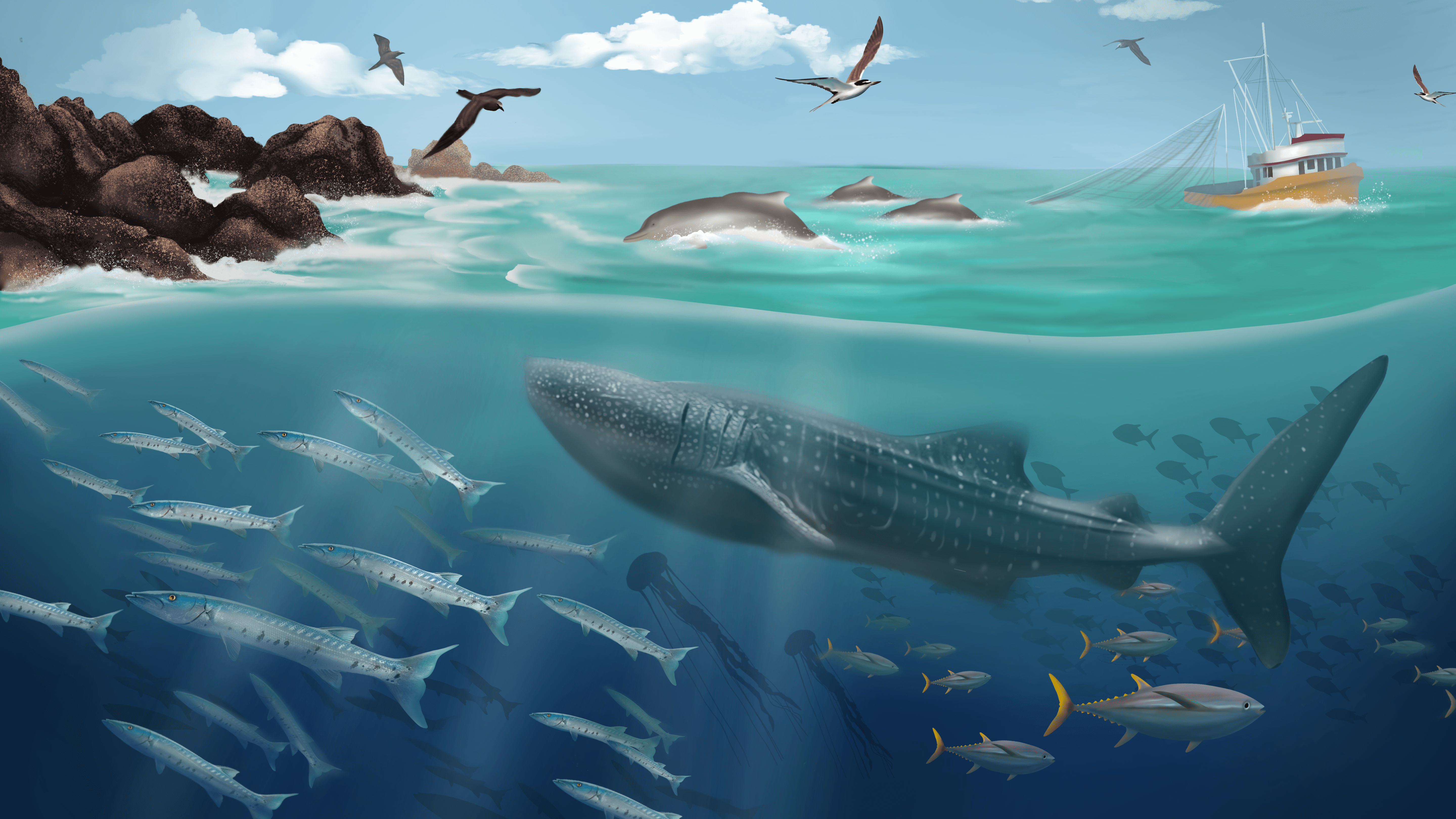The pelagic or open ocean ecosystem encompasses the entire water column, beyond the boundary of coastal waters (thus, called open sea). While it extends all the way from the surface to the sea bed, it does not include the sea bed itself. By volume, this ecosystem is the largest ecosystem in the world, accounting for about 65% of the ocean, but is among the most nutrient-poor. It is further divided on the basis of the depth of the water column and distance from the shore. Open oceans are dynamic ecosystems, experiencing constant change due to the action of currents, winds, stratification, upwelling, and sunlight. The largest and some of the most iconic marine species call the open ocean their home.

Plankton, sharks, whales, tuna, barracuda, swordfish, dolphins
Species inhabiting this ecosystem range from tiny, microscopic plankton to the largest animals in the world. Most of these species spend their entire life cycle here without ever coming to the shore. The open ocean, owing to its global connectivity, facilitates some of the most fascinating migrations undertaken by marine life. Being a nutrient-poor environment without the support of corals or seagrasses, and unsheltered and unbounded, species found here are robust, strong swimmers, and have special adaptations to thrive.